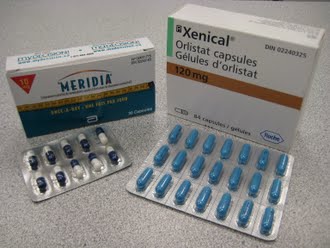
Overview
When it comes to fat loss, slow and steady loses the race. "According to American research published in the journal 'Obesity, ' men and women who did 300 hours of cardio over the course of a year lost an average of only 5 pounds, " Craig Ballantyne, owner of TurbulenceTraining.com, said. "That's 60 hours of cardio to lose one pound!"
More intense training - in shorter bursts - burns calories more quickly and burns more fat overall. And unlike long, slow cardio sessions, intense training keeps you melting fat even after your workout is over, says Martin Rooney, director of the Parisi Speed School and author of "Ultimate Warrior Workouts."
It's not all about adding exercise, though. For fat loss, the two best exercises to eliminate, says Ballantyne, are "the fork to mouth and the 12-ounce curl."
"You can't out-train a bad diet, " said David Jack, director of Teamworks Fitness, in Acton, Massachusetts. "If you're training and then eating an extra 400 calories of garbage, that's what your workout burns. It's senseless."
You've been warned. Step away from the tortilla chips and the treadmill, and try these five high-intensity training strategies to torch fat fast.
Men and women who did 300 hours of cardio over the course of a year lost an average of only 5 pounds. That's 60 hours of cardio to lose one pound!
- Craig Ballantyne, owner of TurbulenceTraining.com
Interval training - bouts of high-intensity exercise alternated with short rest periods - not only burns more calories than traditional cardio training, but also boosts your body's ability to fry fat through hormone production.
"[With intervals], you have a greater increase in growth hormone - a fat-burning hormone - and adrenaline, another fat-burning hormone that also helps suppress appetite, " said Ballantyne.
Not only are interval workouts shorter than traditional cardio training, but they also make you fitter in fewer sessions, he adds.
"There are two ways to increase cardiovascular fitness - by increasing the delivery of oxygen to the heart and lungs or by increasing the utilization of oxygen at the muscle level, " Ballantyne explained.
Steady-state works by increasing the oxygen delivery to your heart and lungs. Intervals, however, work on your muscles, helping them use oxygen more efficiently so your heart doesn't have to pump as much to make them perform.
Jump on a stationary bike and start your own interval training regimen with this guide from Ballantyne:
Start with a regular warmup. When you've finished that, pedal at a rate that's 20 percent harder than your normal cardio intensity. After 30 to 60 seconds, bring the intensity down to a rate that's half the intensity of a normal cardio workout.
"This is important, " Ballantyne said. "If you don't take it down to 'easy' during the recovery, you're not doing anything different from a regular cardio workout, and you won't be able to work hard during the interval portion. You want two extremes: hard and easy."
Alternate periods of 30 to 60 seconds of hard work with 30 to 60 seconds of easy pedaling for six to 10 intervals to complete your session. As this gets easier, increase the intensity of each interval, work longer during the hard portion, shorten your rest periods or add more intervals. Repeat three or four times per week.
If you haven't sprinted since a coach was blasting a whistle in your ear, you're missing out on a natural but extreme form of interval training that can pay dividends for more than just your legs.
"Sprinters don't just have great-looking glutes. They have tremendous arms and shoulders, too, " said Nick Tumminello, director of Performance University. "You can't get more of a natural, total-body exercise."
INTERESTING VIDEO




 Anti-obesity medication or weight loss drugs are all pharmacological agents that reduce or control weight. These drugs alter one of the fundamental processes of the human body, weight regulation, by either altering appetite, metabolism, or absorption of calories...
Anti-obesity medication or weight loss drugs are all pharmacological agents that reduce or control weight. These drugs alter one of the fundamental processes of the human body, weight regulation, by either altering appetite, metabolism, or absorption of calories...
 Bodybuilding supplements are dietary supplements commonly used by those involved in bodybuilding and athletics. Bodybuilding supplements may be used to replace meals, enhance weight gain, promote weight loss or improve athletic performance. Among the most widely...
Bodybuilding supplements are dietary supplements commonly used by those involved in bodybuilding and athletics. Bodybuilding supplements may be used to replace meals, enhance weight gain, promote weight loss or improve athletic performance. Among the most widely...








